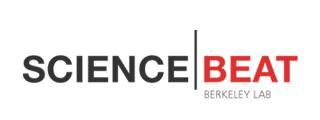

| April 30, 2004 | science beat | | lab a-z index | lab home |
 |
 |
||
|
|||
| Texas Tests Carbon Sequestration in Geological Formations | |||||||||||||||||||||||||
| Contact: Lynn Yarris, lcyarris@lbl.com | |||||||||||||||||||||||||
| The air is awash in carbon dioxide, and it's estimated that each year we add another seven billion tons of the stuff through the burning of fossil fuels. Scientific consensus says something must be done about this problem and it must be done soon. Looking to be a part of the solution, Berkeley Lab researchers in the Earth Sciences Division (ESD) are playing a key role in a major test for underground carbon sequestration.
Starting this month, some 3,000 tons of carbon dioxide, compressed to a liquid, will be injected nearly a mile deep into a brine-saturated aquifer called the Frio Formation, which sits above an abandoned oil field just east of Houston. Researchers with ESD and the Texas Bureau of Economic Geology will spend about a year monitoring what happens to the carbon dioxide plume as it moves throughout the formation, displacing the brine from porous rock. The Frio Pilot Test is the first scientific evaluation in the United States of brine formations as underground carbon sequestration storage sites. "While we expect the plume to spread out over a few hundred meters, we expect the carbon dioxide to stay buried for thousands of years," says Larry Myer, a geological engineer with the Earth Sciences Division who leads Berkeley Lab's participation in this project. "The risk of leakage is a critical factor when storing carbon in brine formations but I'm optimistic that our test results will show that these formations are safe for carbon sequestration." While there's little danger of a catastrophic escape, Myer says enough small leaks over time would negate the advantages of burying the carbon dioxide underground. Whether the carbon dioxide is buried underground or under the sea, something else has to be done with it other than venting it into the air. Two hundred plus years of industrialization have already resulted in the emission of an enormous amount of carbon dioxide into Earth's atmosphere. According to a new report from the U.S. National Oceanic and Atmospheric Administration, record levels have been reached this year. NOAA scientists further predict that atmospheric carbon dioxide concentrations will double from pre-industrial levels by the middle of this century at the latest. Although the effects of doubling atmospheric carbon dioxide levels are not entirely understood, most scientists believe there will be serious environmental consequences if steps are not taken to curb emissions. The goal of carbon sequestration is to prevent carbon dioxide emissions from reaching the atmosphere by capturing a significant amount of this greenhouse gas at the source, i.e., power plants and industrial smoke stacks, and securely storing it where no environmental harm will be done.
"We already have the technology base for storing carbon dioxide in brine formations because similar injections have been used in enhanced oil recovery operations for decades," says Myer. "However, we need pilot tests to demonstrate that this approach to carbon sequestration is safe and effective." Brine formations represent one of the biggest of all potential underground storage areas for sequestered carbon. In the U.S. alone, there are more than 60,000 of these formations. According to Sally Benson, Deputy Director for Operations at the Lab, and a prominent national figure in carbon sequestration, "If brine formations are proved to have the capacity that early estimates suggest, they will be able to store hundreds of years worth of carbon dioxide emissions from fossil-fuel power plants." Many of the largest of these brine formations run along the Gulf Coast through Texas and Louisiana. The Frio Formation is typical of these formations, made up of alternating and hydrologically isolated deposits of sand and shale. The formation is topped by a thick shale layer that will keep the carbon dioxide buried beneath the surface. Lateral migration will be restrained by a series of faults bordering the formation. According to Susan Hovorks, a state geologist for Texas, the Frio Formation by itself could hold up to 350 billion metric tons of carbon dioxide. Not only is the Frio Formation geologically ideal for a carbon sequestration test, it's also conveniently located in an area that, through a combination of electrical power generation, chemical manufacturing plants and refineries, has one of the highest concentrations of carbon dioxide emissions in the U.S. A convoy of trucks will be used to haul the carbon dioxide from the BP oil refinery in nearby Texas City to well bores at the Frio Pilot Test injection site.
ESD researchers will be responsible for defining the initial hydrologic and geophysical characterization of the test site that will provide a baseline for subsequent monitoring efforts. They will then deploy such technologies as transient pressure testing, tracers, vertical seismic profiling, and cross-well seismic studies to measure how the carbon dioxide moves through the formation over time after it is injected. Finally, the measurements made at the Frio Pilot Test will be applied to computer models to show what would happen to much larger volumes of carbon dioxide over much longer periods of time. The Frio Pilot Test will be carried out as part of the Carbon Sequestration Leadership Forum, an international global climate change initiative announced last year by Secretary of Energy Spencer Abraham. It is the first U.S. program under this initiative. The long-term objective of the initiative is to improve carbon capture and storage technologies through coordinated research and development with international partners and private industry. Additional information
|
|||||||||||||||||||||||||
| Top | |||||||||||||||||||||||||